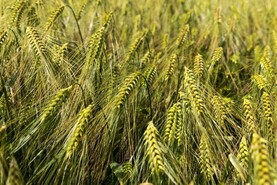Farmers looking to plant new hedges or seeking guidance on managing existing ones are encouraged to attend various events hosted by Teagasc during Hedgerow Week.
On demonstration farms across the country, attendees can observe hedgerows that have been planted and maintained over the past three years, providing insight into the differences in growth between topped and tree-line hedges. These events run from 2 to 6 September and will also cover essential tips on hedge-cutting as the season begins on 1 September.
Catherine Keena, Teagasc’s countryside management specialist, told the Irish Farmers Journal that it’s crucial to decide on the type of hedge you want to grow before planting.
She noted that many hedgerows are being poorly maintained, often chopped at the top like a “toilet brush,” which can lead to carbon emissions.
The best time to assess hedgerows is in December when the branches are bare, making it easier to evaluate the structure.
Types of hedges
Keena emphasised the different specifications for planting topped or tree-line hedges.
A topped hedge should be pruned close to the ground after planting to encourage multiple shoots and dense growth, eventually reaching a height of 1.8m with a tree every 10m.
Compostable film, available from Irish companies Maiztech and SAMCO, can be used to protect new shrubs by securing it over the cut stumps to prevent light and vegetation from encroaching.
On the other hand, a tree-line hedge should be allowed to mature without being topped, with side trimming only when necessary to keep it clear of fences or roadways.
Walking along the sides of the hedge in June or July helps flatten grass and reduce competing vegetation.
Benefits of hedgerows
The slogan for this year’s Hedgerow Week, ‘Better for All,’ highlights the broad benefits of well-managed hedgerows.
Keena emphasised their significance for biodiversity, as their linear structure is favoured by birds and wildlife.
Additionally, hedgerows contribute to climate resilience, water quality, and landscape aesthetics. Strategically placed, they also provide practical benefits for farmers, such as shelter for animals.
Hedge-cutting season opens on 1 September
Keena advocates for a mix of topped and tree-line hedgerows on farms, ensuring a continuous supply of food and berries for wildlife.
While side trimming is acceptable for safety or to prevent overgrowth onto roadways, maintaining the structure of topped hedges by trimming the body and top annually is crucial.
The Teagasc countryside management specialist has observed a decline in the quality of hedges across Ireland.
Many topped hedges have become stumpy and require cutting back to encourage thicker growth at the base. In contrast, tree-line hedges are generally in better condition, as long as their tops are not cut, allowing them to mature into trees.
Keena stressed the need for more training and guidance for farmers, particularly those planting new hedges as part of environmental schemes.
The upcoming demonstration days aim to provide this essential support. Farmers should order saplings from nurseries in time to avoid shortages and ensure the Irish province passport comes with their saplings.






 This is a subscriber-only article
This is a subscriber-only article










SHARING OPTIONS: